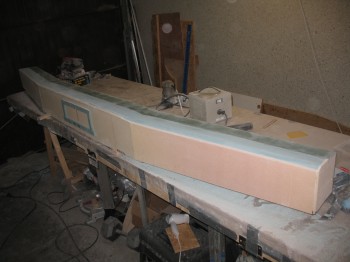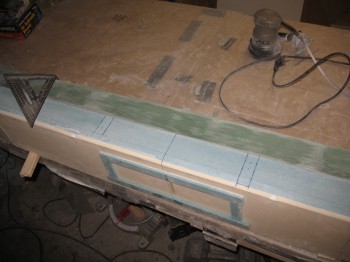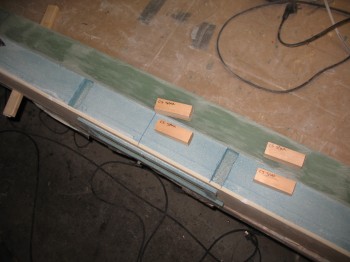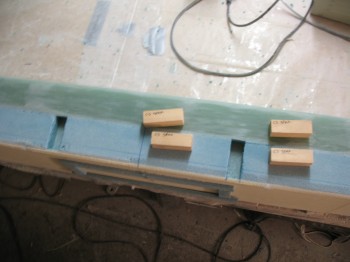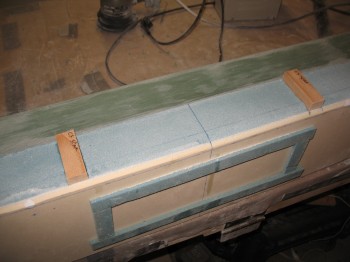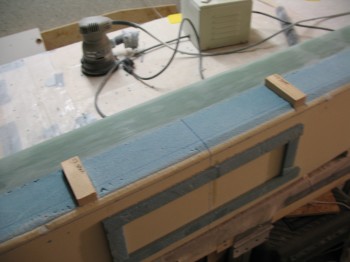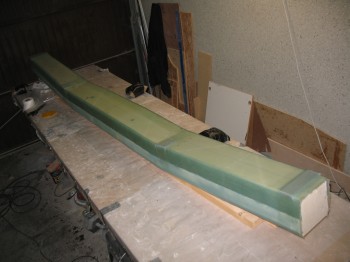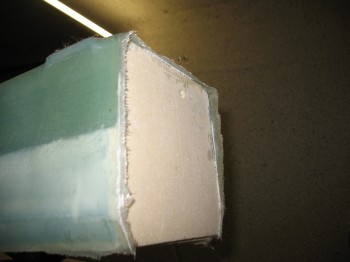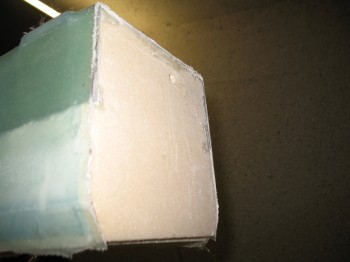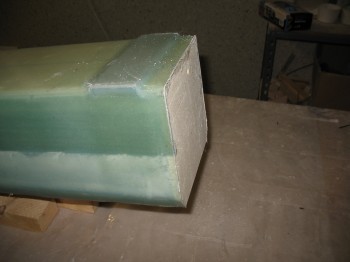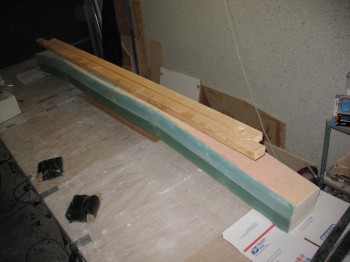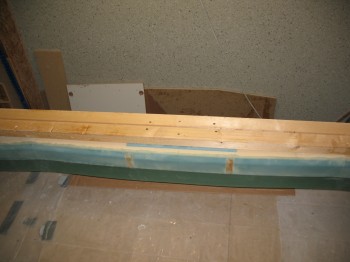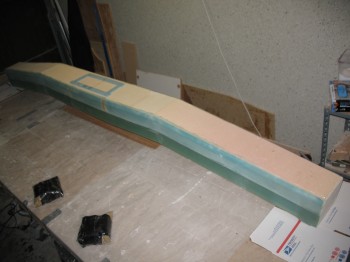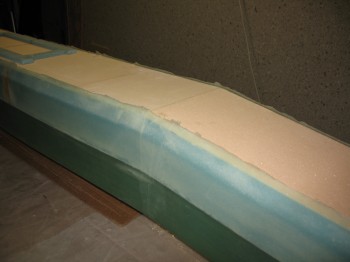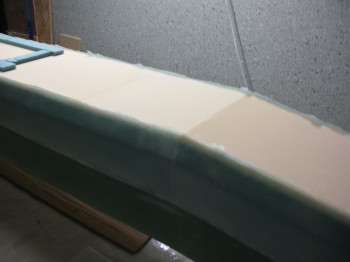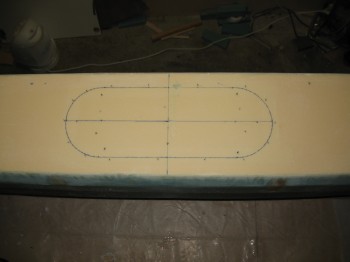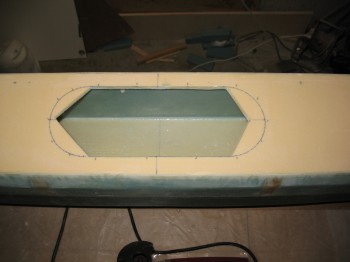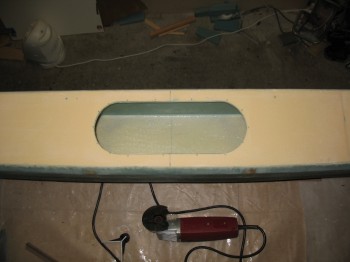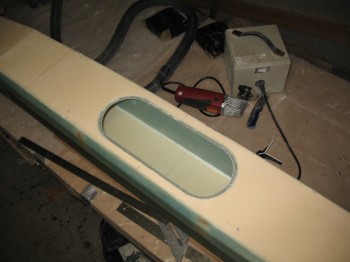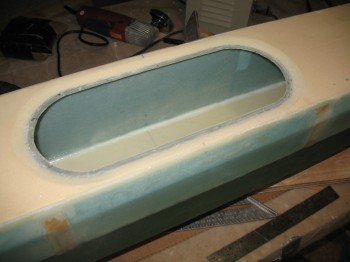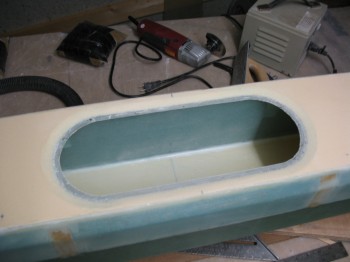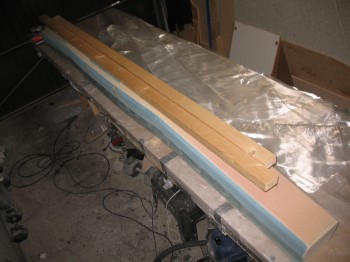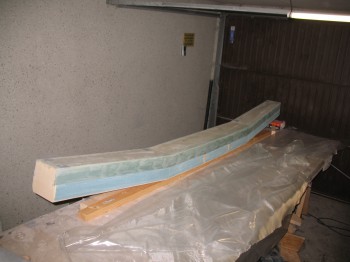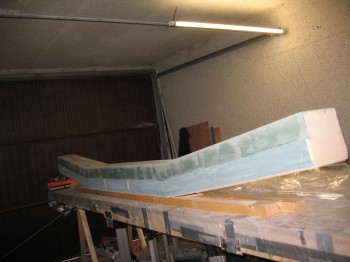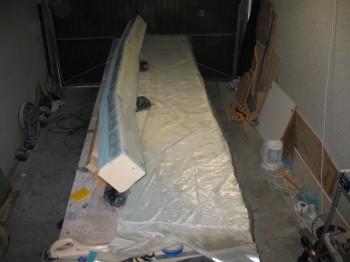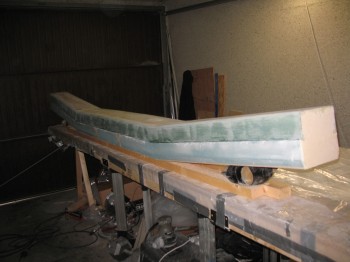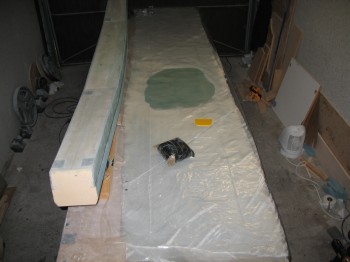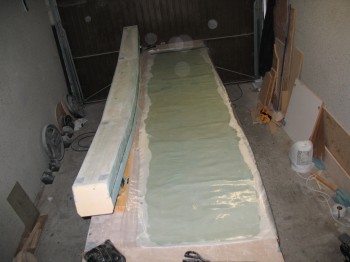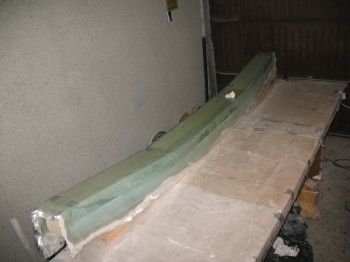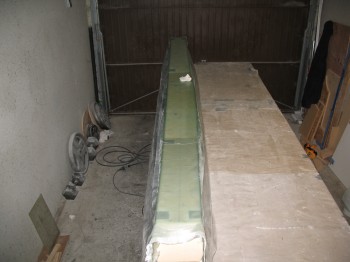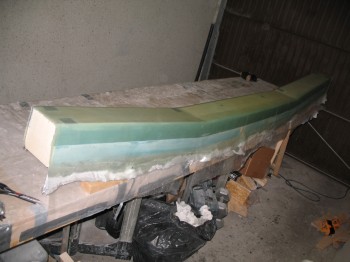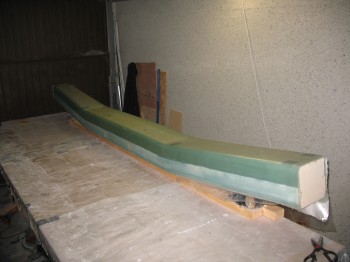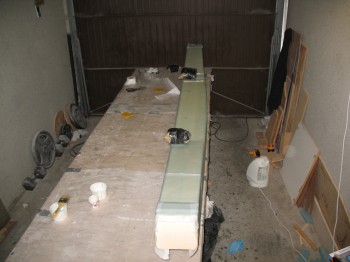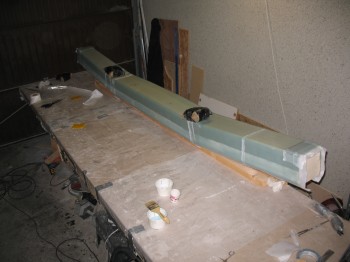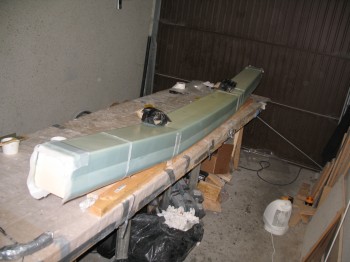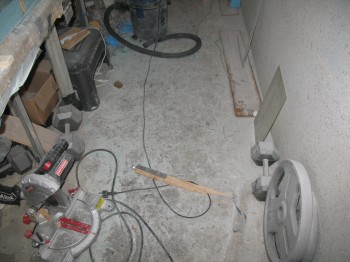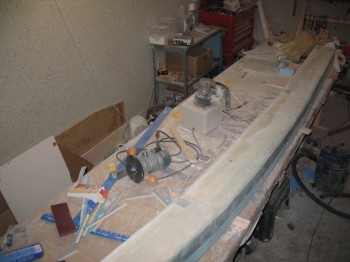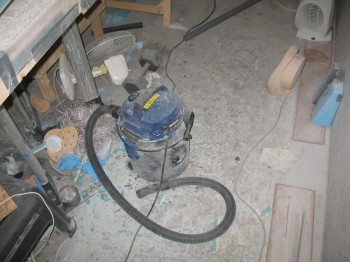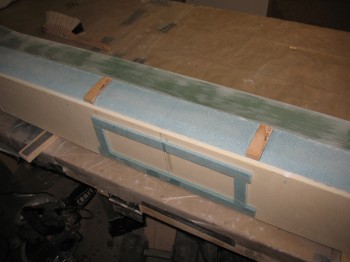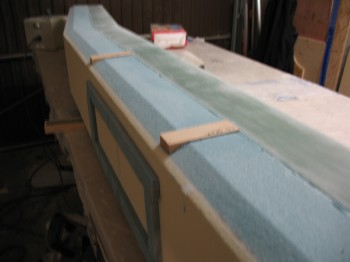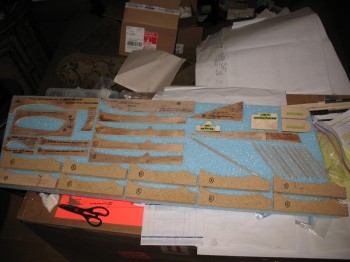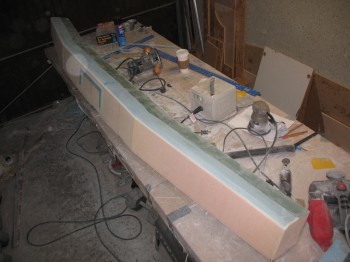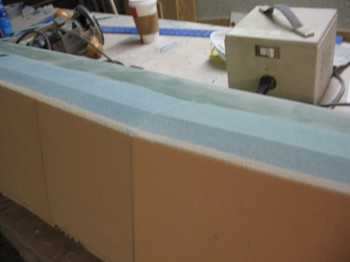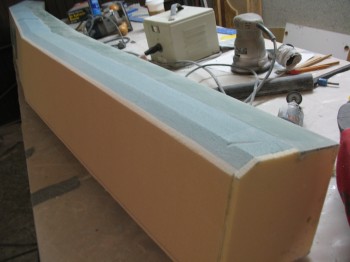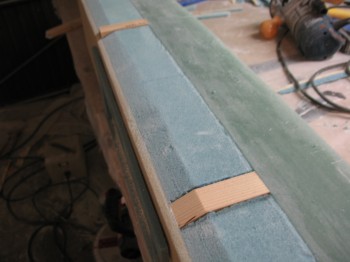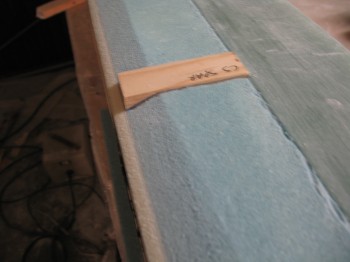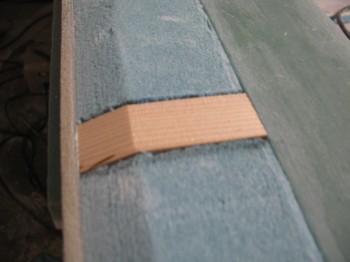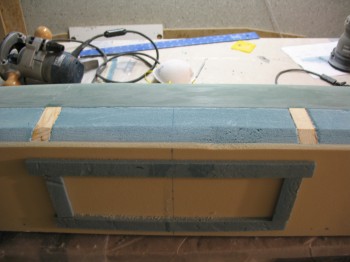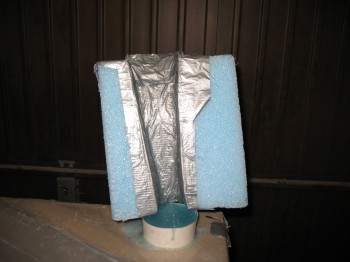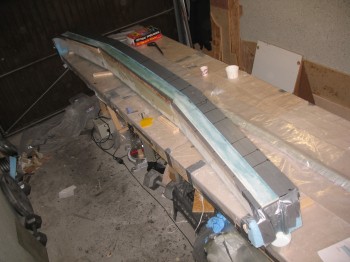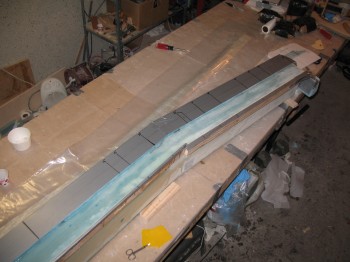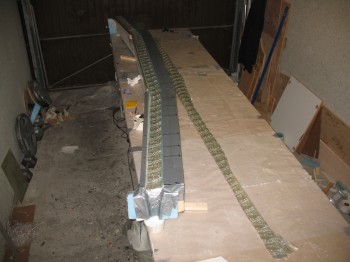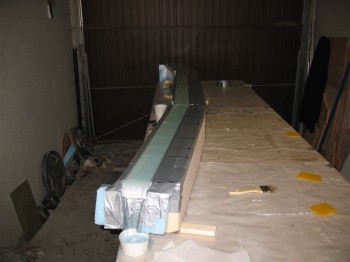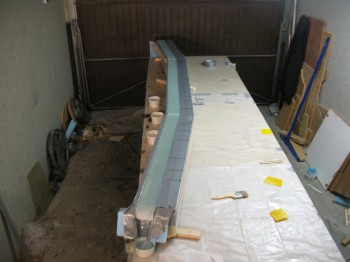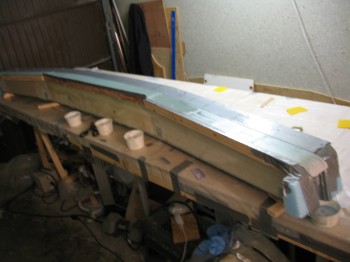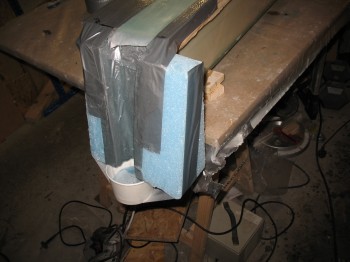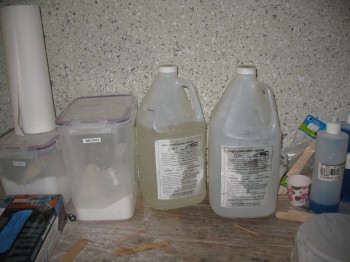I checked the lower spar cap layup first thing… it looked good!
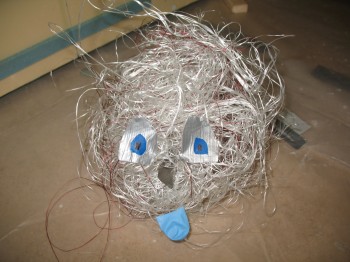
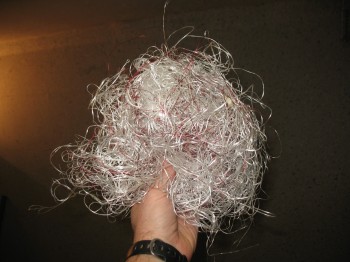
I pulled the peel ply & Fein-sawed the ends off level with each end bulkhead.
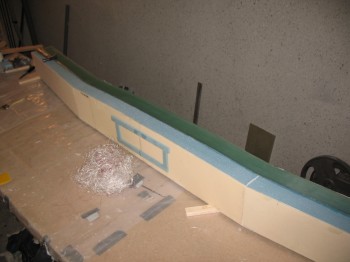
I then removed the dams & chiseled off the residue. I sanded the aft face of the CS spar to remove the dead bondo, epoxy, etc.
I then belt sanded the upper spar cap to level out the “steps.” The steps are the end of each subsequent layer of 3″ UNI glass after it cures. The stuff is so thick that even though it gets peel plied, there is a very visible step at each layer of glass in the spar. The belt sander helps smooth it out so that it’s not TOO lumpy when the spar gets it’s final wrapped glass skin.
A builder’s tip on laying up spar caps I received AFTER I glassed 6 of the 8 spar caps on this bird (the last 2 are on the canard) is to pull the individual strands in each layer of 3″ UNI tape so the are very staggered on each end. You still have the same amount of glass, it’s just spread out over a broader area…. so doing it the easy & efficient way is fine for some builders, but I’ll stick to my knuckle-dragging Neanderthal ways thank you very much….ha! (sheesh . . . )
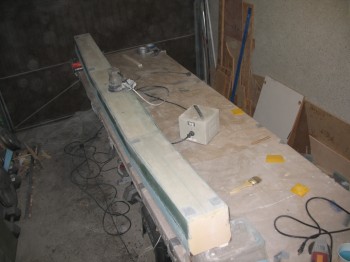
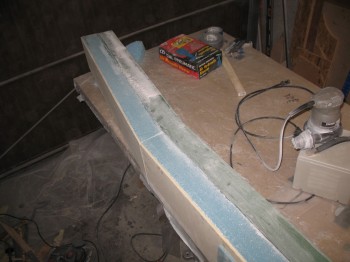
I also sanded down the foam adjacent to the spar cap to make sure it was level & smooth.
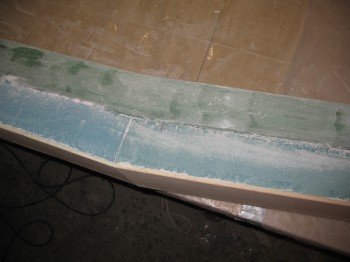
Below are some good shots of the wing-to-spar bolt extrusions & the CS spar caps.
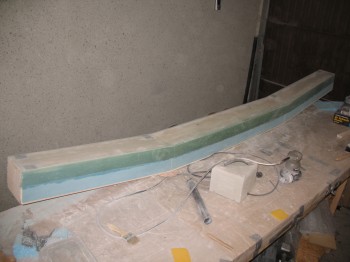
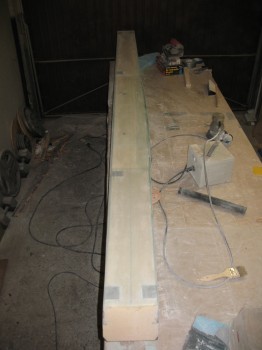
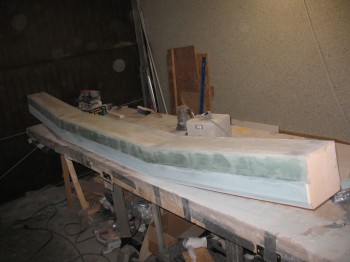
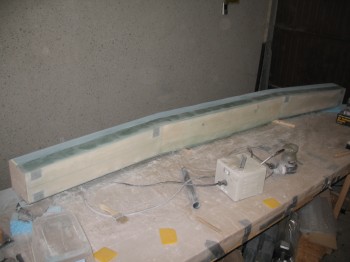
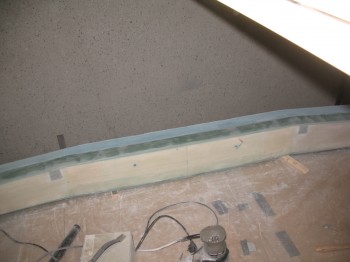
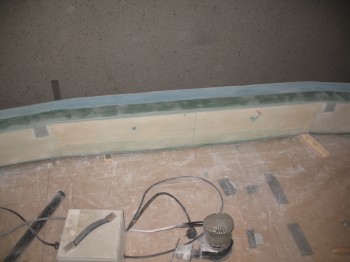
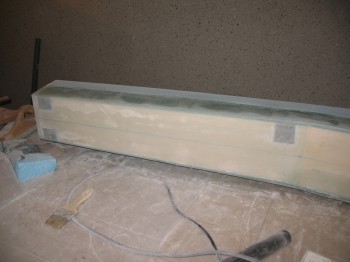
Since sanding is so fun, I continued on in my material removal quest by starting in on removing the front corner wedge. This wedge is removed to create an angled corner “LE” on both the top & bottom that will eventually receive the also-angled glassed foam top & bottom skins of the strake. In fact, the front Outboard faces of the CS spar makes up the aft wall of the fuel tanks and are forever hidden (hopefully) within the strakes once everything is all glassed up.
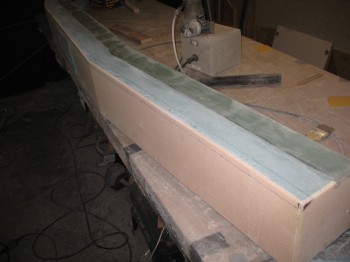
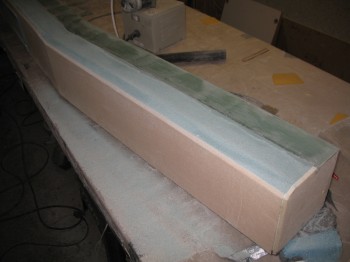
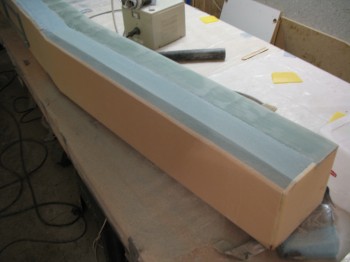
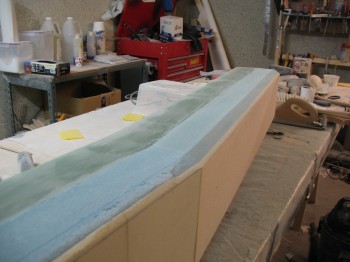
I’ve mentioned it before, but it’s amusing to me how a number of steps spelled out in the plans look so benign, simple and minimal in effort . . . until you start the step. These front corner angles look simple enough to remove the material, but it took quite a while and a fair amount of work. It probably didn’t help that I used the much tougher blue PVC vs the easily-carved Urethane foam in my construction of the CS spar. Even still, I’m happy with my choice to use the blue foam.
I took a break from shaping the corner angles & grabbed my Spruce wood hard points that get embedded into the CS spar for the engine mounts to bolt to, as well as the fuselage longerons. I had cut those hard point inserts a while ago, so installing them was simply a matter of marking & removing the foam from the hard point locations.
Also, a week or so ago on a slow build night, I had measured out the new locations of my hard points compared to the stock plans location since my fuselage is wider. And, although my fuselage is wider, so too are my longerons. Thus, my hard point locations were only about .2″ off from the original plans location.
